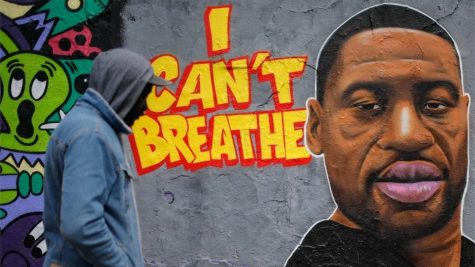George Floyd Trial

Photo Courtesy of: Google Images
Image of Derek Chauvin and George Floyd.
April 17, 2021
George Floyd passed away on May 25th, 2020, his death was very impactful and has brought up conversations about police brutality and inequality in the justice system. George Floyd was arrested by attempting to buy cigarettes with a counterfeit $20 bill, possibly under the influence. Police called the ambulance because of the physical distress of Floyd that resisted arrest. However, witness videos show another perspective of the case in which police officers were pinning down Floyd in an arrest he did not resist. There has been controversy on the amount of force used to arrest Floyd, police officer Derek Chauvin had pinned him down by placing his knee on Floyd’s neck for 9 ½ minutes until Floyd passed away. A trial is currently in session about whether or not Chauvin’s actions were reasonable in that circumstance.
“It’s easy to sit and judge … an officer’s conduct. It’s more of a challenge to, again, put yourself in the officer’s shoes to try to make an evaluation through what they’re feeling, what they’re sensing, the fear they have, and then make a determination,” Barry Brodd use-of-force expert said.
It was reported by police that Floyd was pinned down for frantic resistance that gave Chauvin a right to restrain him for a possible danger to police.
“I felt that Officer Chauvin’s interactions with Mr. Floyd were following his training, following current practices in policing, and were objectively reasonable,” Brodd said.
It is in question, however, if other factors caused Floyd’s death and whether this is situation is accidental rather than intentional. Floyd had underlying conditions such heart disease and high blood pressure, and autopsy reports indicate that Floyd also had methamphetamine and fentanyl in his system.
“And his significant contributory conditions would be, since I’ve already put the heart disease in part one, he would have the toxicology, the fentanyl and methamphetamine. There is exposure to vehicle exhaust, so potentially carbon monoxide poisoning or at least an effect from increased carbon monoxide in his bloodstream. And paraganglioma, or the other natural disease process th

at he had. So, all of those combined to cause Mr. Floyd’s death,” David Fowler, a retired forensic pathologist said.
The Black Lives Matter movement believes this is another case of inequality in the justice system and police brutality against black people in America. Video evidence shows that Floyd was expressing that he could not breathe while Chauvin continued to apply pressure to his neck and believe the main cause of his death is the way he was restrained by police. Chauvin also received past complaints on use-of-force that only 2 of the 18 he was held accountable for. The Chief of Minneapolis Police has also testified in saying that Chauvin’s actions did not follow protocol.
“There’s an initial reasonableness in trying to just get him under control in the first few seconds, but once there was no longer any resistance, and, clearly, when Mr. Floyd was no longer responsive and even motionless, to continue to apply that level of force to a person proned out, handcuffed behind their back, that that in no way, shape or form is anything that is by policy,” stated Medaria Arradondo, Chief of Minneapolis Police.







